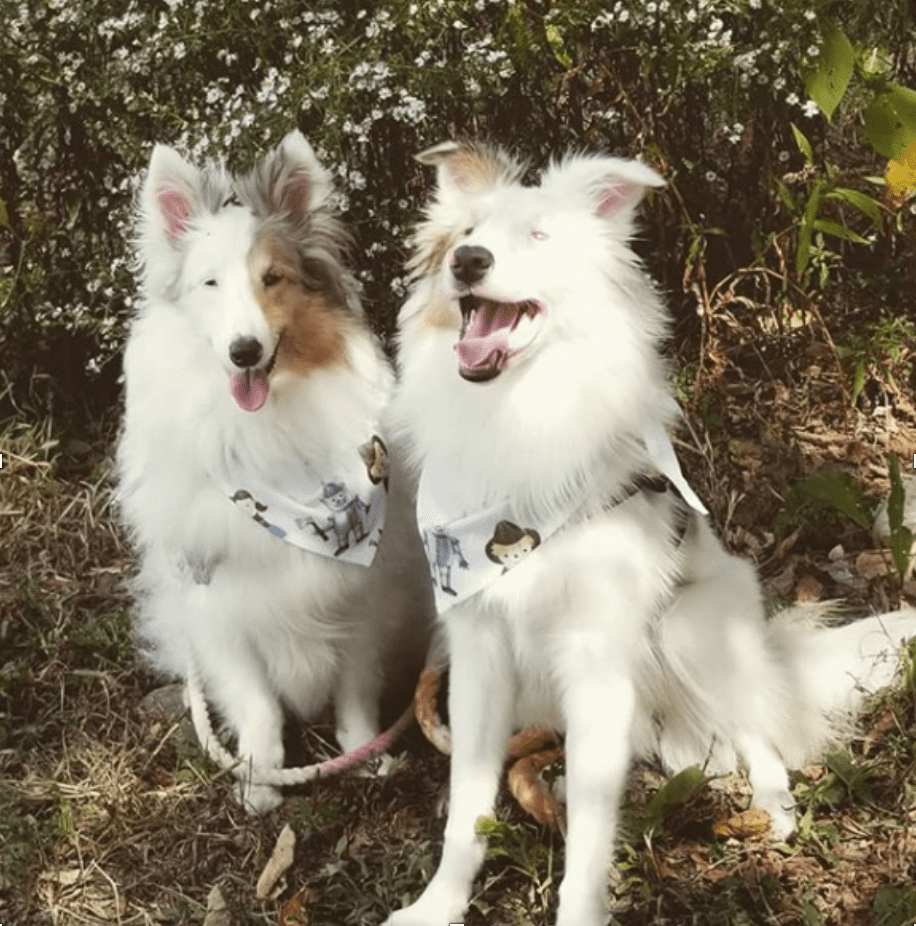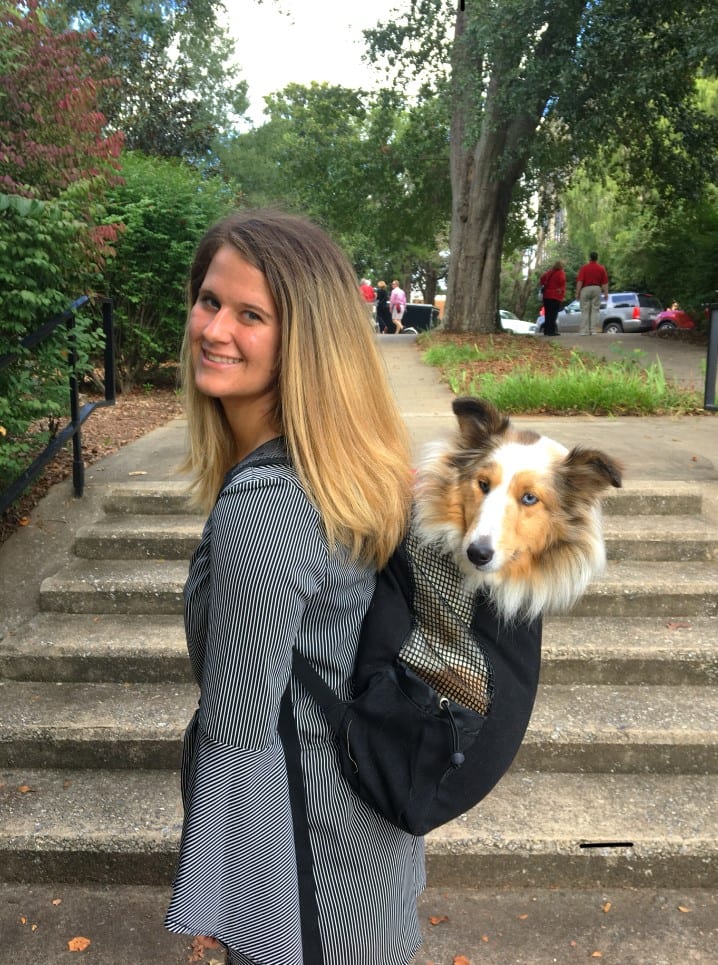Dog coats come in a seemingly endless variety of patterns, lengths, textures and colors, determined by their genetic makeup. Just 8-14 different genes are responsible for most of these differences in coat color and pigmentation. Dogs inherit two alleles, or variations, of each of these genes, one from the father and one from the mother. Alleles can be dominant, where the effect is present if there is just one copy present, or recessive, where the effect is only shown if there are two copies of the allele present. The resulting combinations of alleles that are inherited influence certain aspects of their coat color. One of these genes, the merle gene, impacts coat color by producing distinguishing markings in numerous breeds.
The merle gene exists as two alleles: the dominant allele Merle (M), and the recessive Non-merle (m). If a dog inherits the dominant M allele from at least one parent, it will have merle characteristics. As a result of the M allele, random sections of the dog's coat will be diluted or mottled. Merle dilutes the dark pigments, and can result in partial or completely blue eyes as well as lightened colors on the nose and paw pads. Typical merle dogs have one dominant merle allele and one recessive non-merle allele (Mm). If two of these merle dogs are bred, there is a ¼ chance that their offspring will inherit two copies of the Merle allele (MM). These dogs are called double merles.

Double merles are mostly white in color; they are also more likely to have hearing and vision problems. The main connection between the merle gene and health problems is rooted in the pigment producing cells, or melanocytes. Melanocytes in the inner ear help convert vibrations from sound waves into electric impulses sent to the brain to be interpreted as sound. The merle gene causes a reduction of melanocytes. While dogs with a single copy of the merle gene normally have enough of this type of cells present, double merles have very few, to the point where hearing loss can occur. Lack of melanocytes also leads to reduced blood supply and ultimately the death of nerve cells in the ear. Double merles can be deaf or hearing impaired in one or both ears. Double merles are also more likely to have eye and vision defects, though the exact link between the merle gene and vision defects is unclear. Resulting abnormalities including irregular development of the pupils and iris, or reduced eye size can cause light sensitivity, poor vision, and partial or total blindness.
Curious about the experiences of raising double merle dogs, I reached out to Dawn, who owns two double merle Shetland Sheepdogs, Kalisi and Adora. Kalisi is deaf and vision impaired, and Adora is deaf and blind (8,9). Dawn is an advocate for educating people on double merle and specially abled pets, and shared some of her knowledge and experiences with these unique dogs.
Two large misconceptions are that hearing and vision impaired dogs are not trainable or that they startle and bite easily. However, they are just as intelligent and food motivated as any other dog and are able to be trained to respond positively to touch. Both Kalisi and Adora are trained using touch commands. Kalisi's training also involves different hand signals for different activities including obedience, tricks, and agility. She has two dog trick titles and works as a therapy dog. Dawn says their training is comparable to that for her non-hearing or vision impaired sheltie, Kappi. The main difference is in the way of giving a command, be it by voice, hand, or touch.
Purposeful breeding of two dogs that both carry the Merle allele (often referred to as merle to merle breedings) are typically avoided. However it is not always possible to tell if a dog is a merle by looks alone, as other factors that determine coat pattern could make the characteristic diluted patches less apparent. Genetic testing should be performed to ensure a dog is not one of these “cryptic†merles. Additionally, there are over 15 breeds known to carry the merle gene, so double merles can still occur in a litter from two merle dogs of different breeds.
Most double merle puppies are a result of poor breeding practices or the accidental breeding of two merle dogs, and are often euthanized shortly after birth or placed in shelters. Those that aren't killed often face trouble finding homes as there are many misconceptions surrounding both their ability to be trained and regarding health problems they may face.
Fortunately, numerous groups and advocates are working to combat these myths. With the correct knowledge and training, double merles and other dogs with disabilities are capable of living normal lives and make wonderful pets. Dawn and other advocates want everyone to know that double merles are “different, not less†and that their only limitations are those we put on them.
About the Author

Emily is a PhD candidate in the Department of Microbiology studying a regulator of aromatic compound metabolism in the soil bacterium Acinetobacter baylyi. She loves running, college football, and taking her dog everywhere around Athens. You can reach her at emcintyre@uga.edu. More from Emily McIntyre.
About the Author
- athenssciencecafehttps://athensscienceobserver.com/author/athenssciencecafe/April 17, 2020
- athenssciencecafehttps://athensscienceobserver.com/author/athenssciencecafe/April 12, 2020
- athenssciencecafehttps://athensscienceobserver.com/author/athenssciencecafe/April 3, 2020
- athenssciencecafehttps://athensscienceobserver.com/author/athenssciencecafe/March 6, 2020







